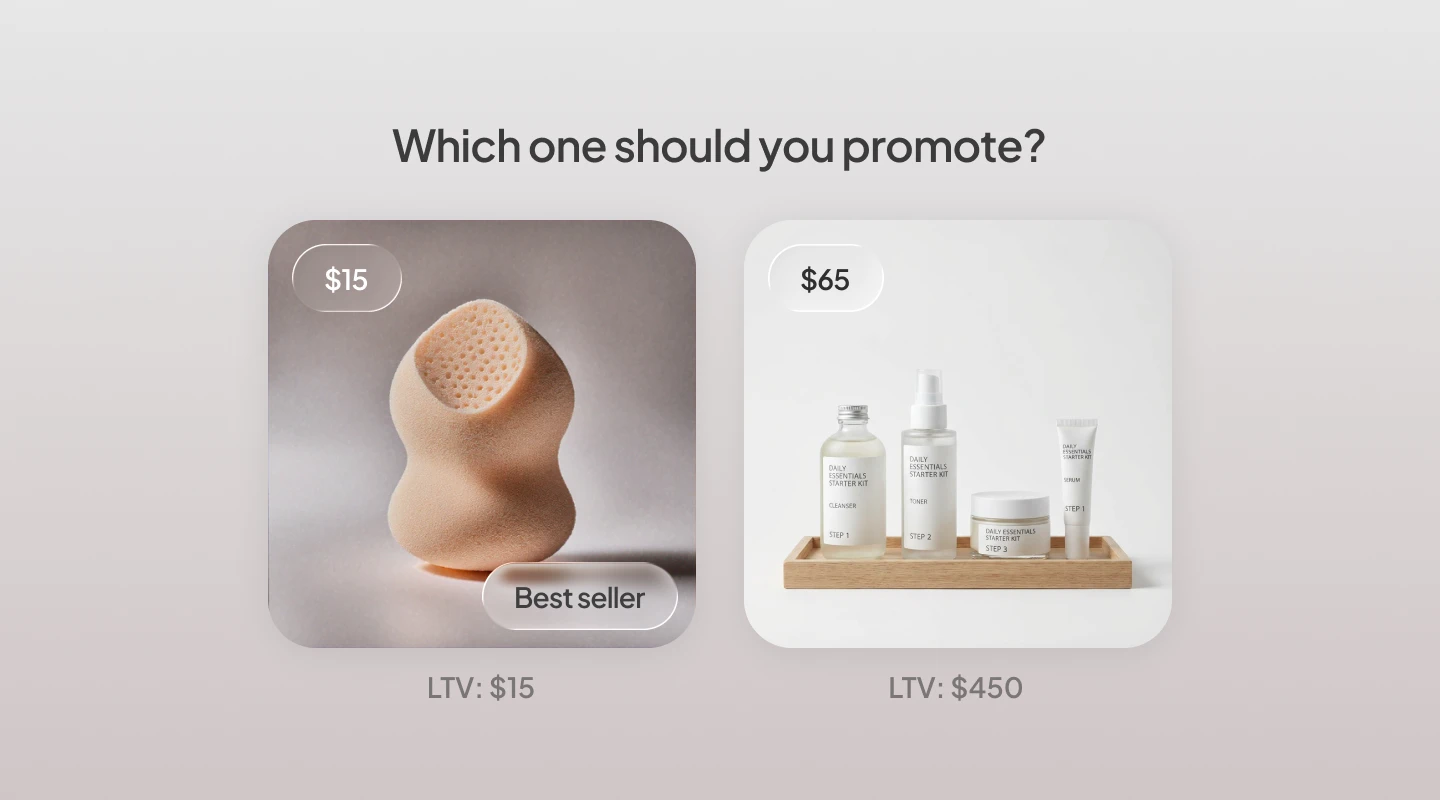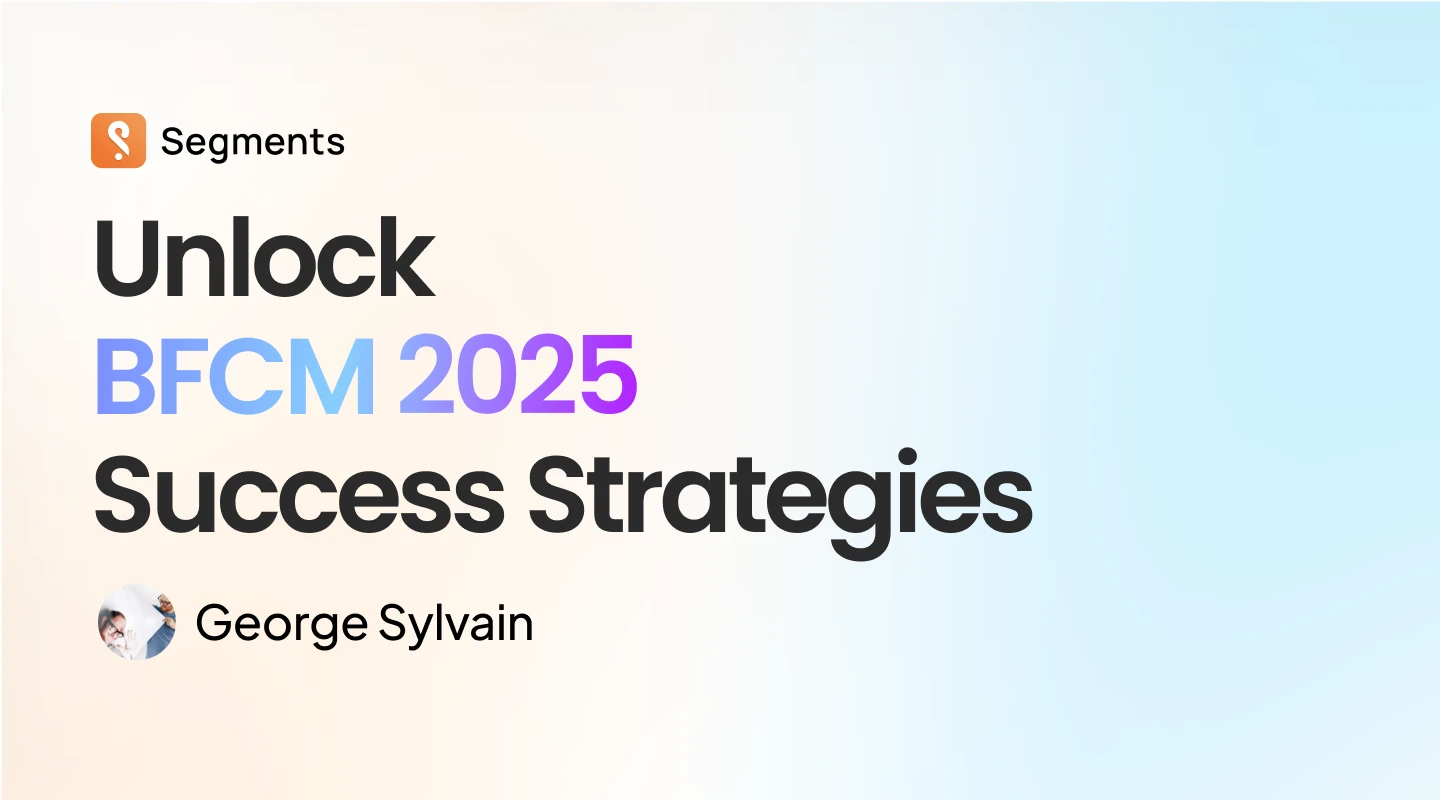
I’m George Sylvain, co-founder of Social Print Studio and former VP of Marketing at Fellow. I’ve got a degree in Statistics and I’ve worked in e-commerce for over 20 years. My focus has long been on using data to understand my customers, looking for patterns and opportunities that drive sustainable and profitable growth.
I've partnered with Tresl Segments to perform a deep dive on last year's BFCM performance. We've analyzed anonymized data from 106 high-growth Shopify stores during BFCM 2024 to uncover insights and trends that will help inform the actions we’re taking for the upcoming holiday season.
To give you a sense of the scale, here's a snapshot of the data I’m referencing:
Total Revenue: $32,033,453
Total Orders: 386,725
Average Order Value (AOV): $82.83
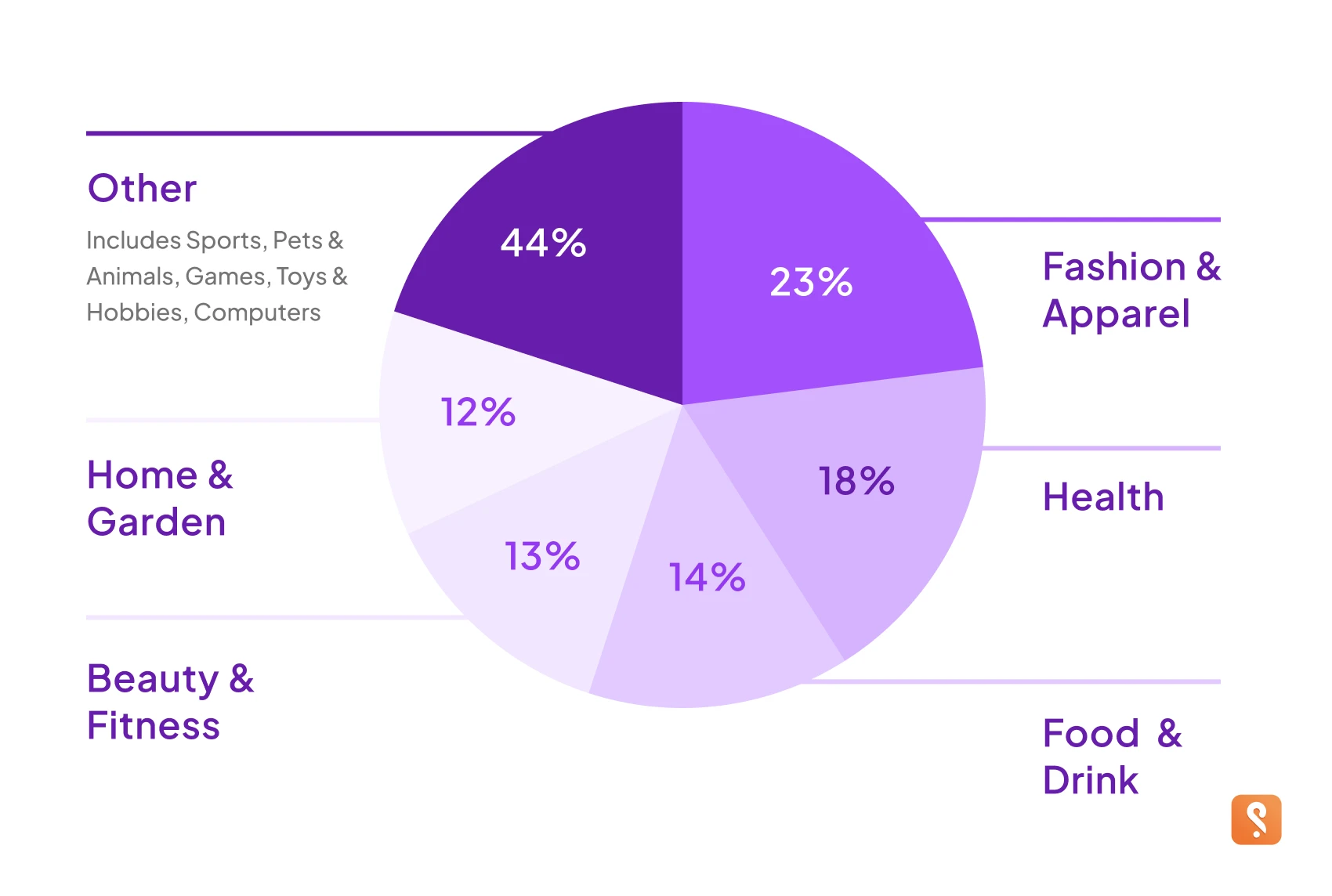
Insight 1: New vs Returning Customers
Across 2024 stores, AOV tended to be higher from new customers than returning, while repeat customers were the (slight) majority of orders and overall revenue.

This trend can vary a lot from store to store! However, for most businesses I have run, first-time customers have had the highest AOV, similarly to the data we see. The data suggests leading with introductory bundle offers or upsells for first time customers can be valuable when maximizing BFCM sales.
As e-commerce continues to mature, returning customers do tend to become more valuable as a macro group, growing in sheer quantity over time such that reactivating them at holidays becomes more and more crucial.
Insight 2: Recency dictates BFCM spending.
The 2024 data shows a clear picture: the more recently a customer purchased, the more they spend.
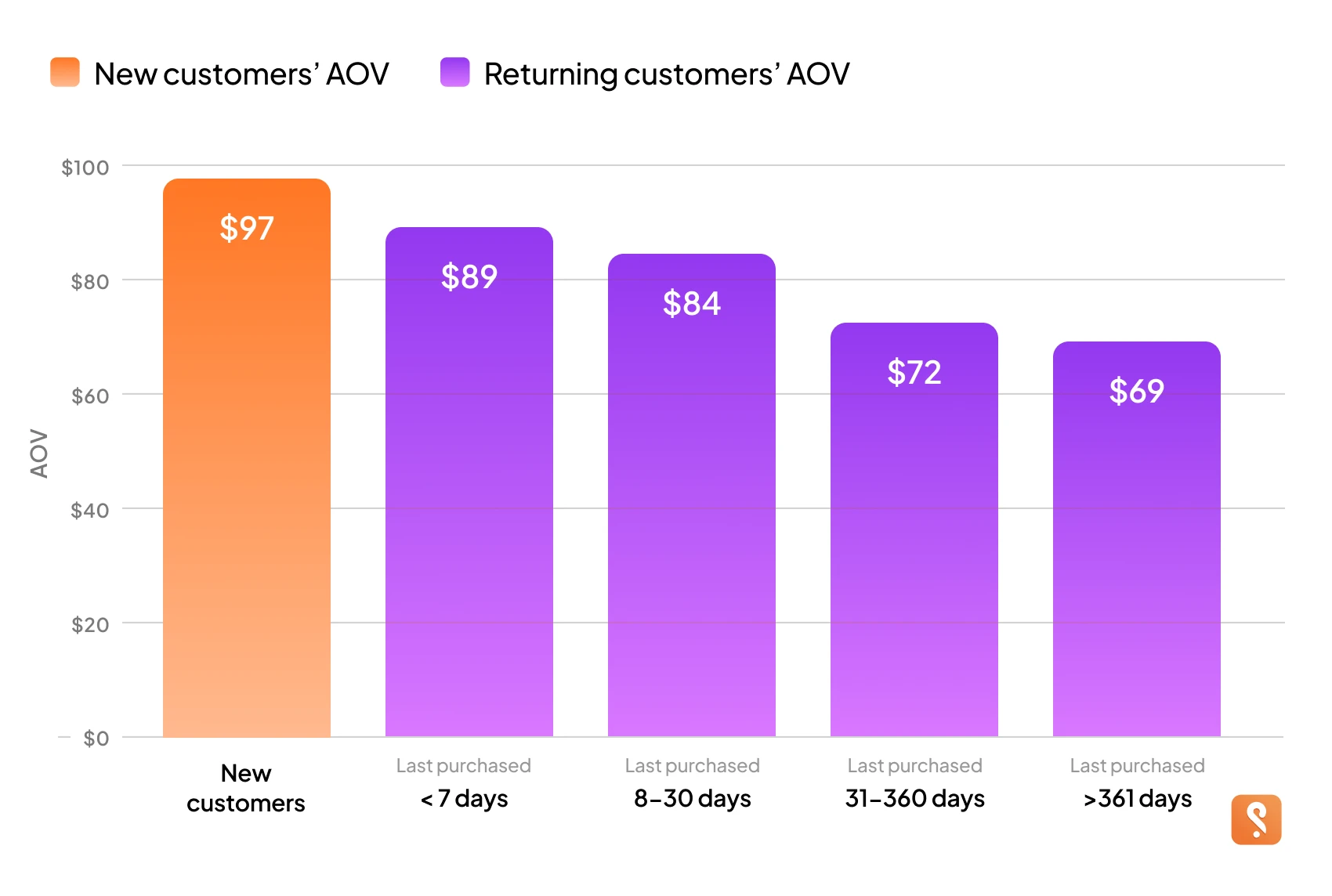
Don’t ignore recent customers! Some companies tend to exclude recent purchasers from BFCM sale emails e.g. “purchased last 14 days” segment, because they don’t want to get asked to retroactively refund customers who missed the sale. Perhaps this is misguided because recent buyers tend to repeat with the highest AOV, indicating they are in their honeymoon phase with your brand and will spend the most.
A significant portion of BFCM customers (16.2%) hadn't purchased in over a year. This shows BFCM-as-win-back campaigns are effective for reactivation. However, this cohort also has the lowest AOV ($68.75), suggesting they are returning primarily for a deep discount.
I recommend tagging this group of BFCM-repeaters as value seekers and trying to recognize they are likely to buy if offered a strong discount only. This could be a place to put aside the regular economics of your business and offer private deals. Recognize you’ve already paid your acquisition costs for them, so you don’t need as high a margi. You know they won’t bite without a strong deal, so create private-sales with urgency throughout the year for this cohort to try to boost their LTV.
Insight 3: The BFCM Marathon vs the Black Friday Sprint
When we split out the stores into the Top 40% and Bottom 60% by revenue, we can really see some insights that separate the top performers from the bottom performers.
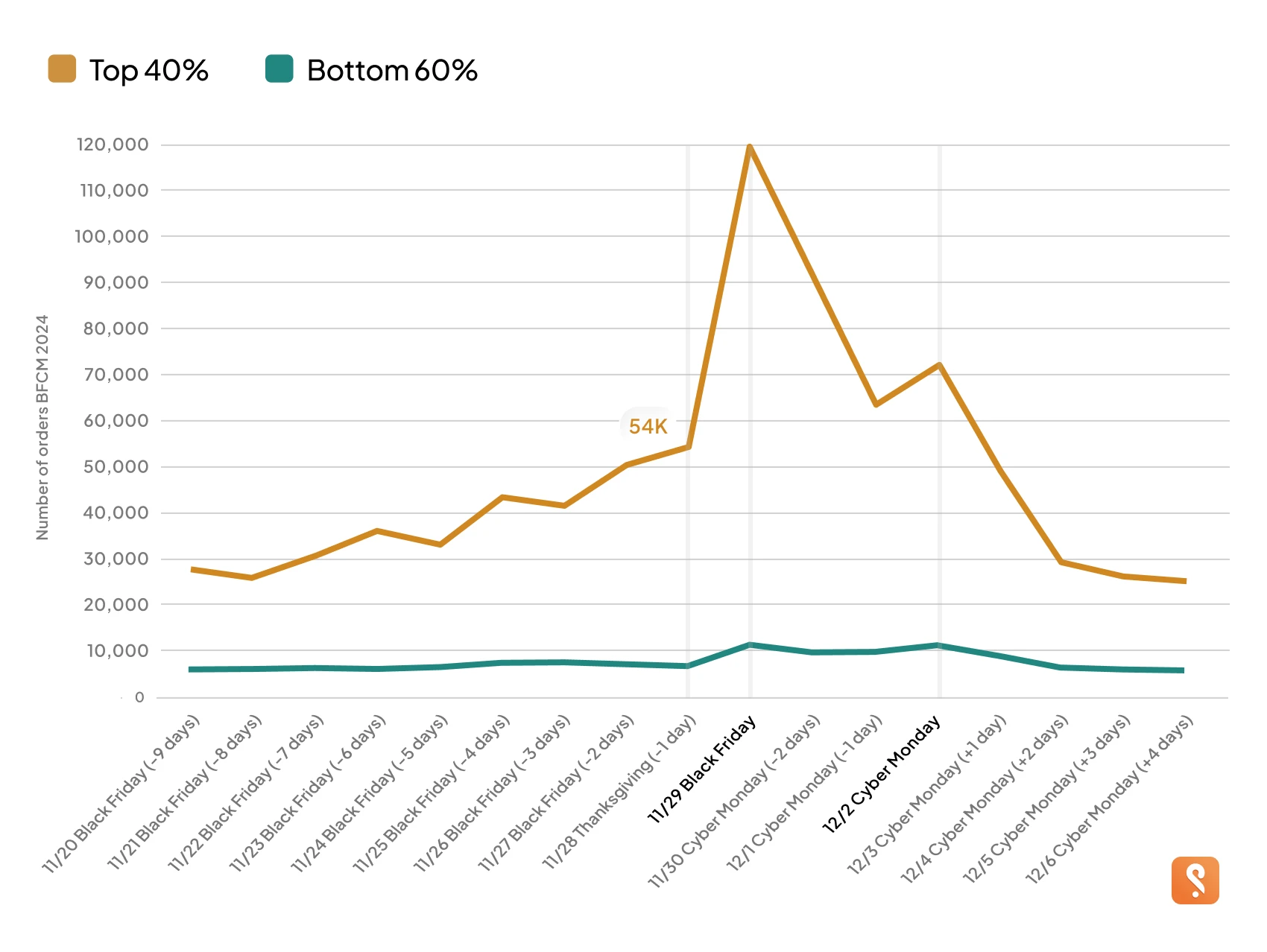
The Top 40% drive a longer sales period with bigger spikes. They treat BFCM as more of a marathon than a sprint. For top stores, order volume begins a steady climb starting a full week before Black Friday. These top performers favor aggressive marketing with Black Friday starting early!
Thanksgiving itself is already a monster (54k orders, bigger than an average pre-BF day by ~2x for the Top 40% stores), whereas it’s barely any different from earlier days for Bottom 60%.
Interestingly for the Bottom 60% in 2024, Cyber Monday was actually their biggest day vs Black Friday. This could be a strategic error on their part, perhaps over-emphasizing Cyber Monday at the expense of Black Friday. Cyber Monday has become a bit less powerful than it used to be as a percent of revenue. My own experience has shown that Cyber Monday had more impact a few years ago pre-covid when shopping was more “IRL” on Black Friday vs Ecommerce on Cyber Monday.
The takeaway: top-performing stores orchestrate BFCM as a two-week-long marathon, priming audiences early, peaking on Black Friday, and sustaining momentum into Cyber Monday. Lower-performing stores tend to “show up late,” missing the pre-Black Friday build and leaning too heavily on Cyber Monday, when consumers are already saturated.
Insight 4: BFCM new customers repeat less frequently.
Compare these two groups and you can see:
- BFCM 2024 new customers: 13.95% repeat rate in the following 6 months.
- Non-BFCM new customers: 19.2% repeat rate in the following 6 months.
Newly BFCM-acquired customers are about 30% less likely to repeat compared to customers acquired at other times of the year. You’re pulling in a lot of deal-driven buyers who don’t repeat at the same rate.
However, the BFCM cohort does have a higher AOV at acquisition ($159 vs $120). They tend to spend more upfront, likely due to bundles or deep discount promos.
I recommend maximizing AOV at time of acquisition in BFCM. You may not get a chance to sell to your newly acquired customers again so try to make sure your highest AOV options and upsell flows are front and center during this period, to make sure your lifetime value from each customer is maximized.
Also, it’s critical to segment & treat BFCM new customers differently. Expect lower LTV unless you build post-purchase nurturing explicitly for them. Tresl Segments builds audiences for these newly-acquired-in-BFCM customers specifically so you can treat them differently in marketing. Build a high-touch 6 week post-purchase series for them, with strong discounts by month 2 if they haven’t purchased.
Insight 5: Acquisition insights from utm data
UTM data tells us some interesting things from our stores.
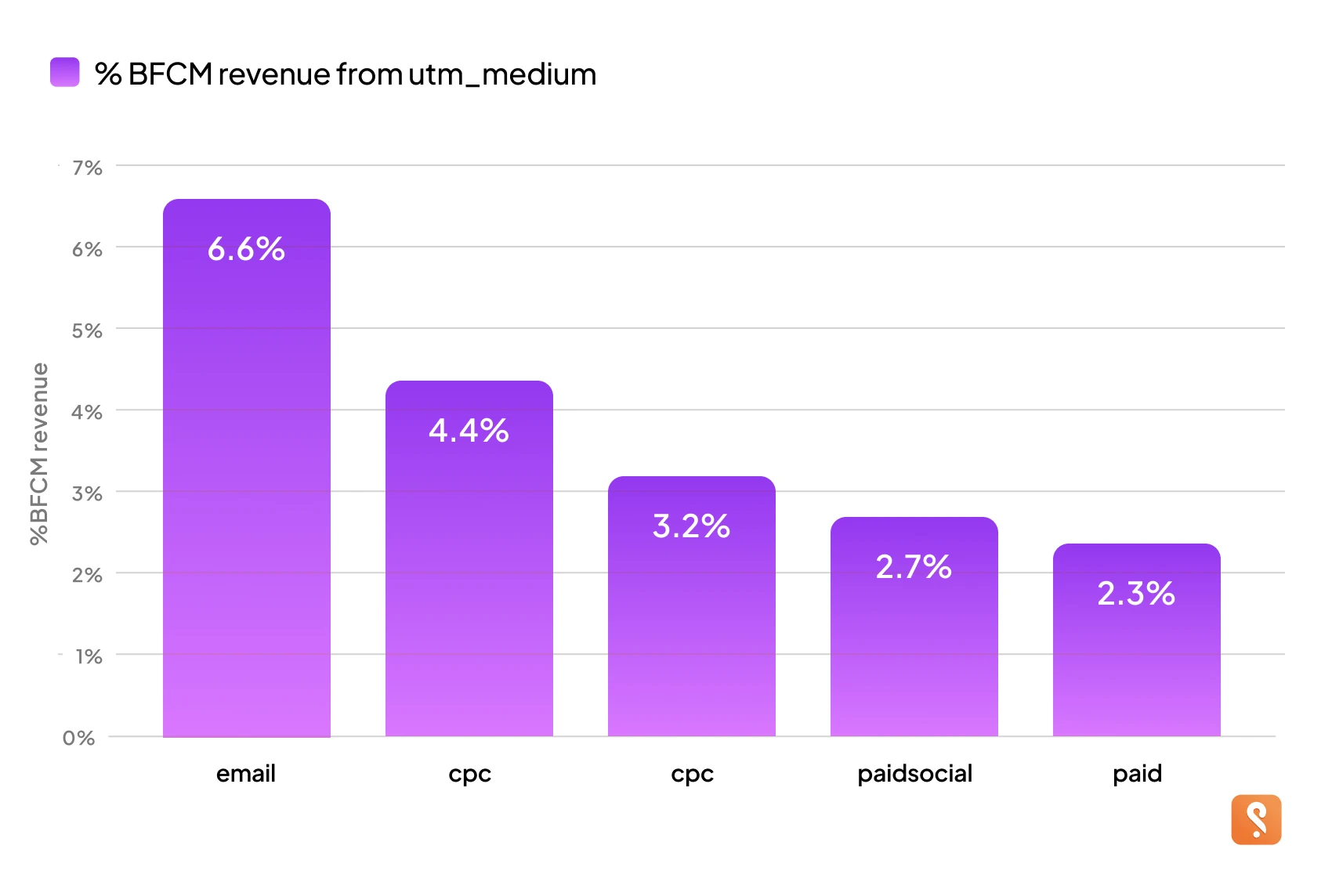
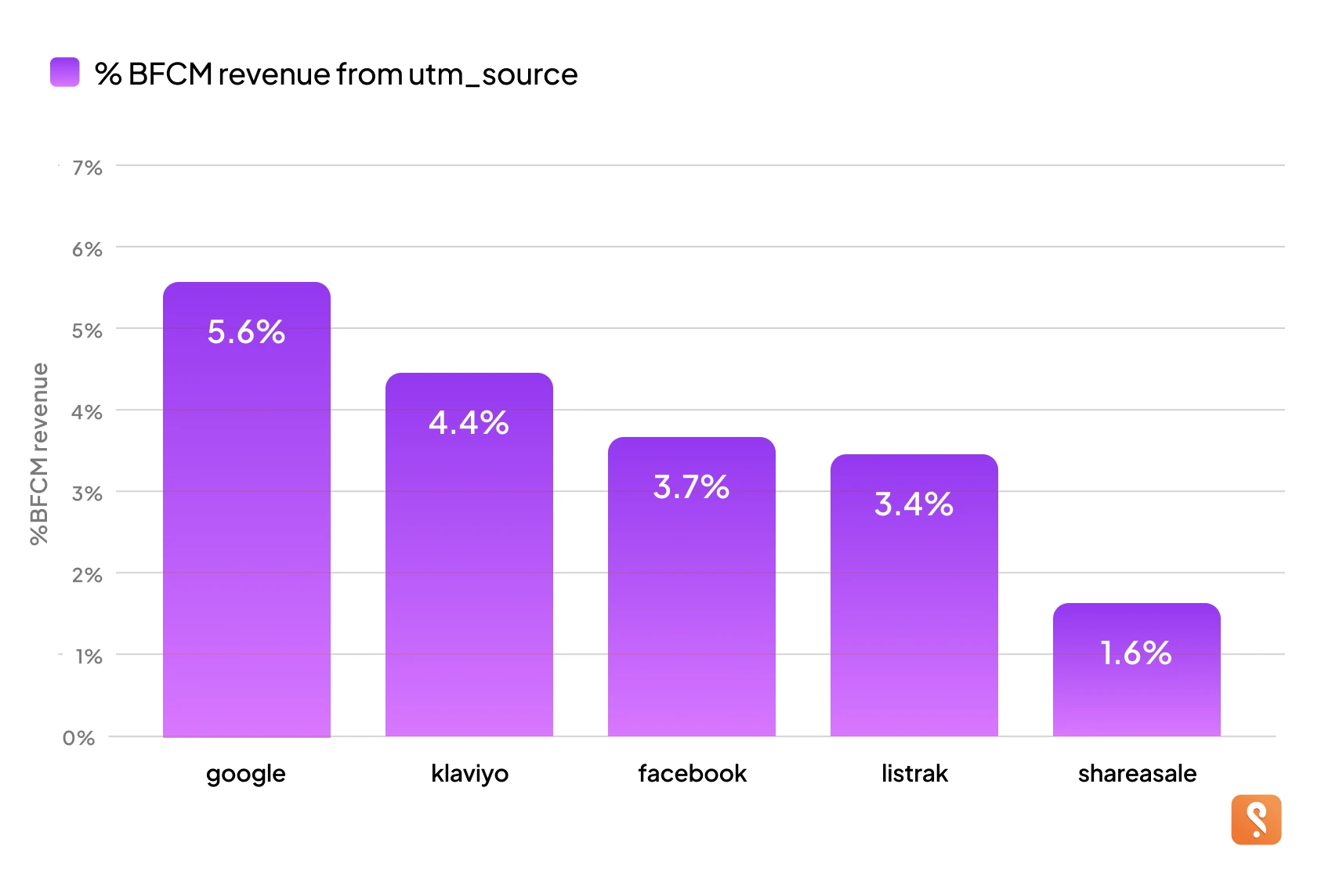
Email was the no.1 channel for revenue for Black Friday. Not a big surprise but this is somewhat interesting to remember as sometimes advertising channels can get more love than email. Brand sending out early access offers and teasers to their most loyal customers drives a huge portion of the early volume in BFCM. Make sure you target your full list early and don’t forget to include people from 12-24 months ago who you may have sunsetted! Email/owned tends to power Cyber Monday and post-drop follow-ups, outperforming paid channels after the main spike.
Google outperformed Meta for our stores as an acquisition channel, likely due to a combination of organic and paid, as well as high intent searches during BFCM. Google ad spend ramps early. Raise bids ahead of Thanksgiving to stay competitive.
Meta produces many orders but at lower AOV among our stores. It is excellent for acquisition and driving traffic to a single discounted hero SKU.
I recommend is to shift some budget towards ads for higher AOV bundles & sets running on Meta during this period! The data suggest that BFCM new customers tend not to repeat but are fine to spend more than your BAU periods. You may see cost-per-acquisition increase but ROAS may increase more as long as you convert these customers to the higher AOV bundles.




